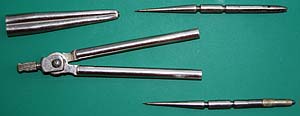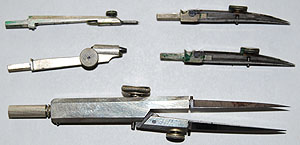



All the leading makers made pocket compasses of various types up to the first part of the twentieth century. These included pillar compasses, Napier compasses, and Swiss pattern folding compasses, each a marvel of engineering being capable of use as both pen and pencil compasses as well as as dividers. Often these were supplied in little Morocco covered cases.
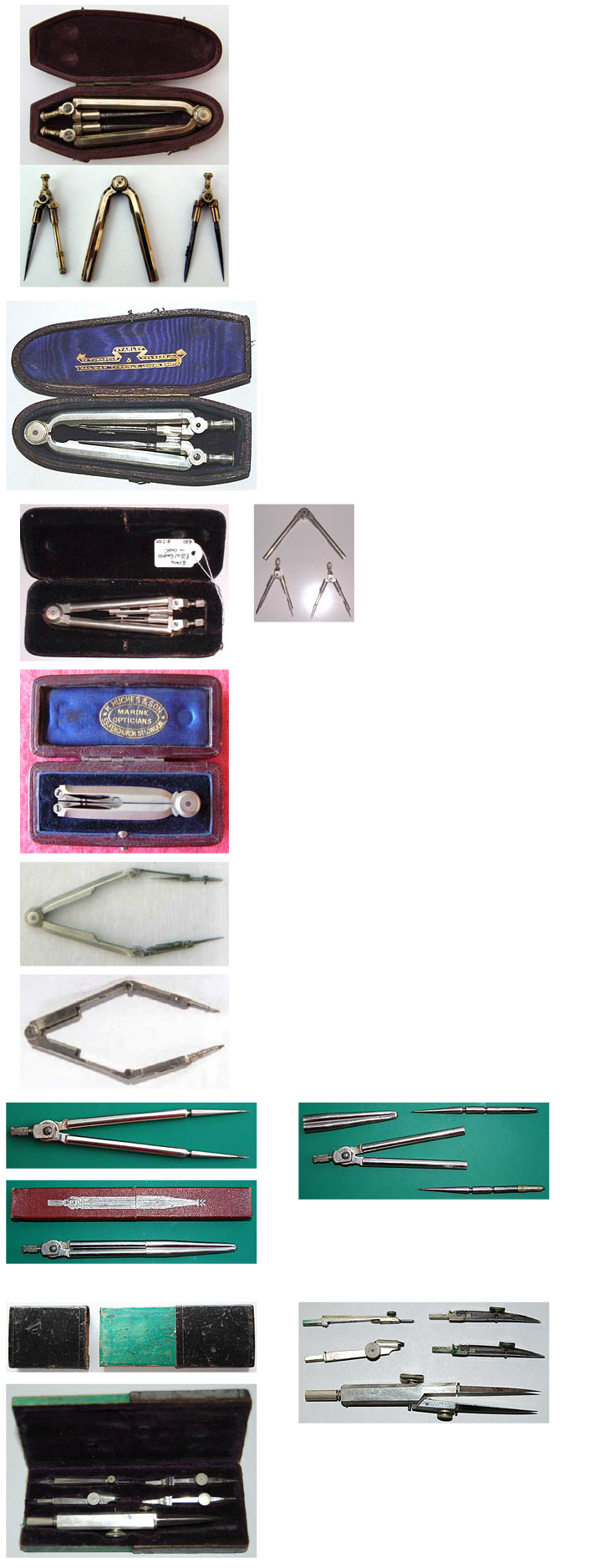
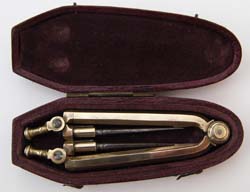
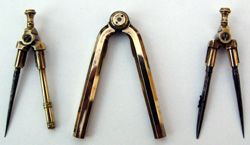
This brass pillar compass dates from the middle of the nineteenth century and is by an unknown English maker. The fitted case is covered in a very fine maroon leather and lined with maroon velvet.
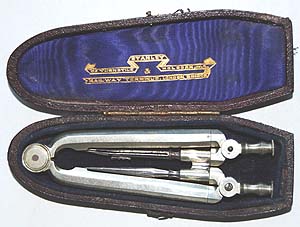
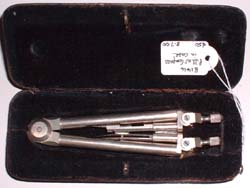
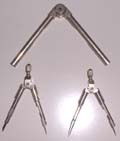
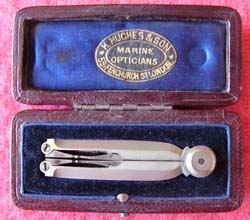
This Napier compass is by H Hughes & Son, Marine Opticians, 59 Fenchurch Street, London. It is similar to the item below which is by a different maker.
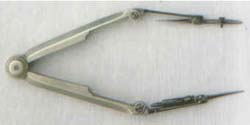
Another Napier compass; it is one of two types of folding, pocket compass in my collection.
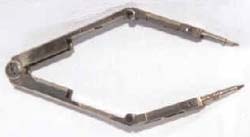
This Swiss Pattern folding, pocket compass is the other type in the collection. Apart from its more rectangular appearance, the points rotate about an axis parallel to the leg joint axes rather than an axis at right angles to these.

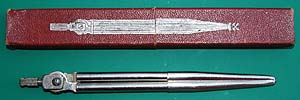

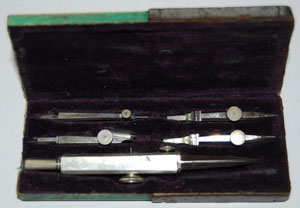
A pillar compass, probably European, it can either be used as a five inch, double jointed compass (pen, pencil or divider) or as a pair of small pen and pencil bows. It is made of electrum and is probably early twentieth century.
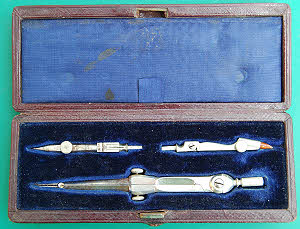
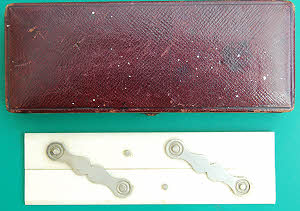
The Morocco leather covered case of English manufacture contains a 4 1/2” ivory and electrum parallel rule, also English and a small compass with two detachable plain points as well as ink & pencil ones that is likely to have been made in Germany or Switzerland.
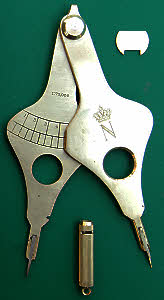
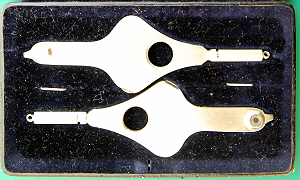
E O Richter Generalstabs-Zirkel no. 484. This is a set of two of these unusual pocket dividers for use with map scales of 1:75,000 and 1:100,000. They were patented in 1892 and this set dates from shortly after that. The significance of the engraved crown over ‘N’ on both is not known. Leather covered case.
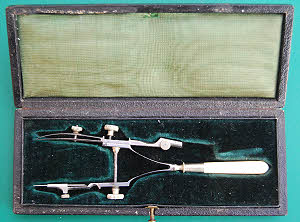
A French turnabout spring bow with ivory handle and electrum ferrule in a pocket case. Late 19th century. Obtained from France.

Folding pen compass, possibly of Continental (French?) manufacture, probably early 20th century or late 19th.

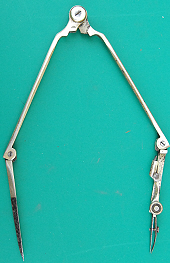
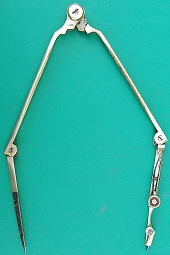
This folding turnabout compass is probably by the same (French?) maker as the compass above. It is very difficult to date these instruments without any maker’s name but there is clearly a lot of hand work, some of it quite crude (see the asymmetry of the limb shoulders).

Folding pencil compass, probably French and same maker as pen one above.
| Early Sets |
| Traditional Sets |
| Later Sets |
| Major Makers |
| Instruments |
| Miscellanea |
| W F Stanley |
| A G Thornton |
| W H Harling |
| Elliott Bros |
| J Halden |
| Riefler |
| E O Richter |
| Kern, Aarau |
| Keuffel & Esser |
| Compasses |
| Pocket compasses |
| Beam compasses |
| Dividers |
| Proportional dividers |
| Pens |
| Pencils |
| Rules |
| Protractors |
| Squares |
| Parallels |
| Pantographs |
| Sectors |
| Planimeters |
| Map Measurers |
| Miscellaneous |
| Materials Used |
| Who made them |
| Who made these |
| Addiator |
| Addimult |
| Other German |
| USA |
| Miscellaneous |
| Microscopes |
| Barometers |
| Hydrometers & Scales |
| Pedometers |
| Surveying Instruments |
| Other instruments |
| Workshop Measuring Tools |
| Catalogues & Brochures |
| Levels & Theodolites |
| Compasses & Clinometers |
| Miscellaneous surveying |
| Micrometers & Verniers |
| Engineering rules and gauges |
| Wood rules & calipers |
| Dial gauges & miscellaneous |
